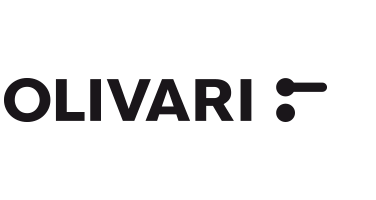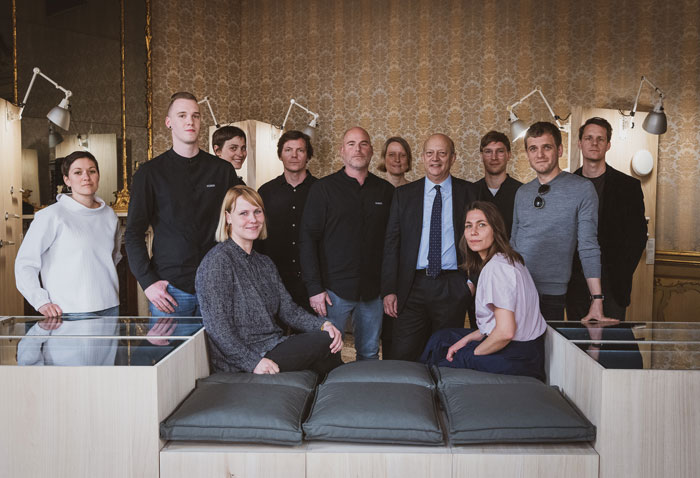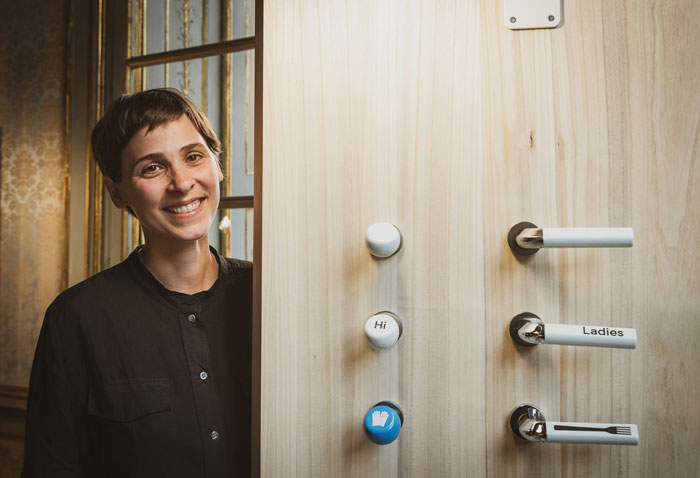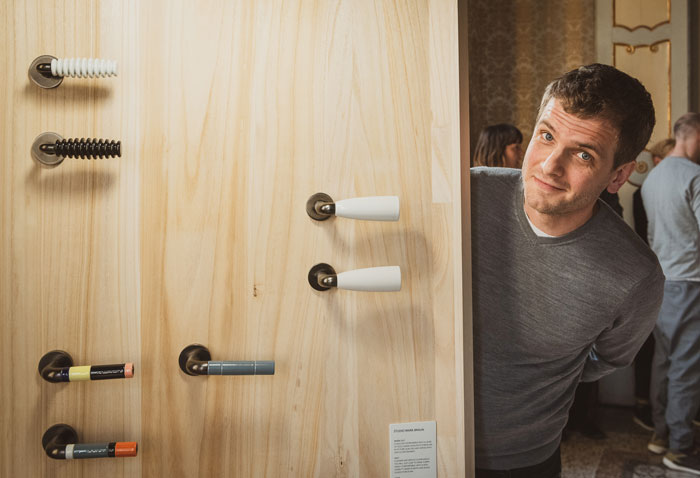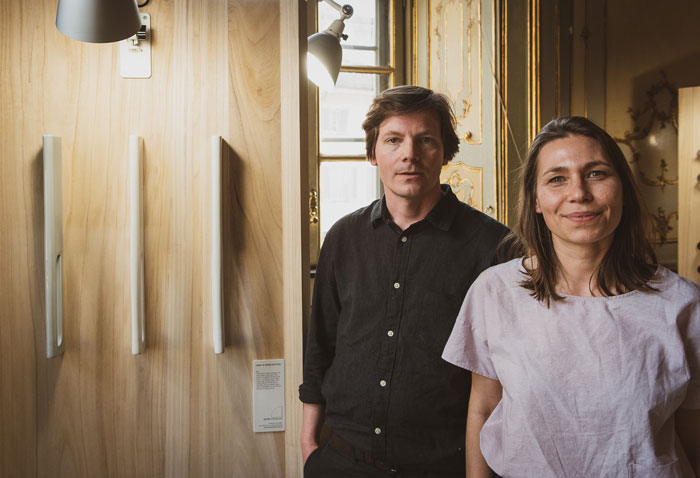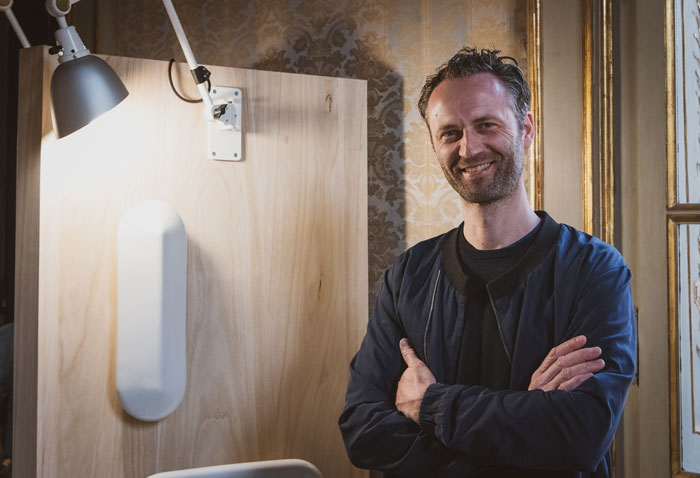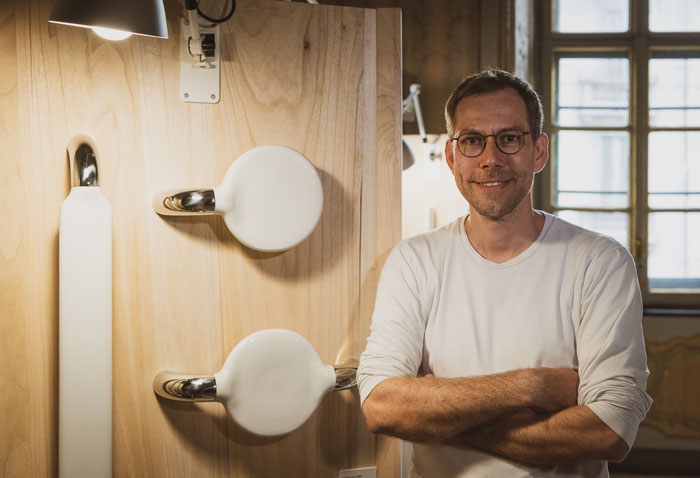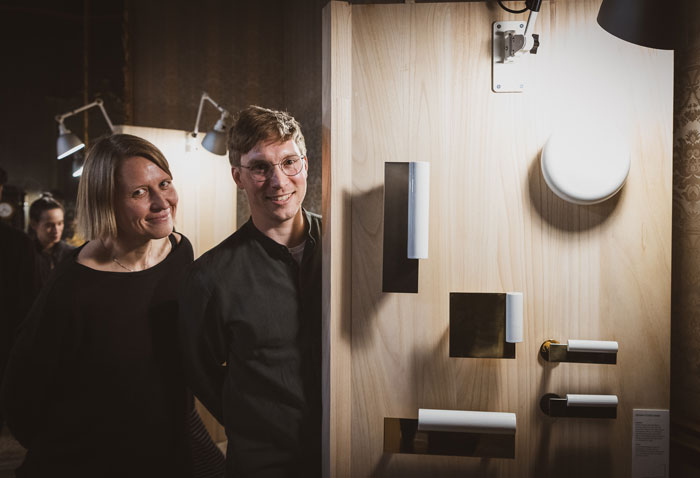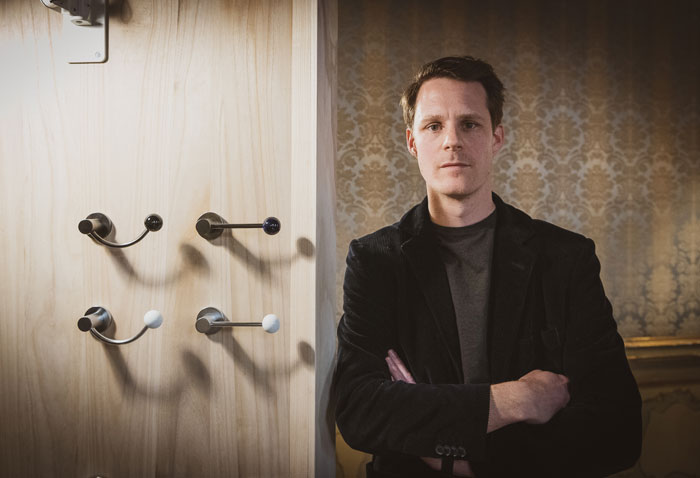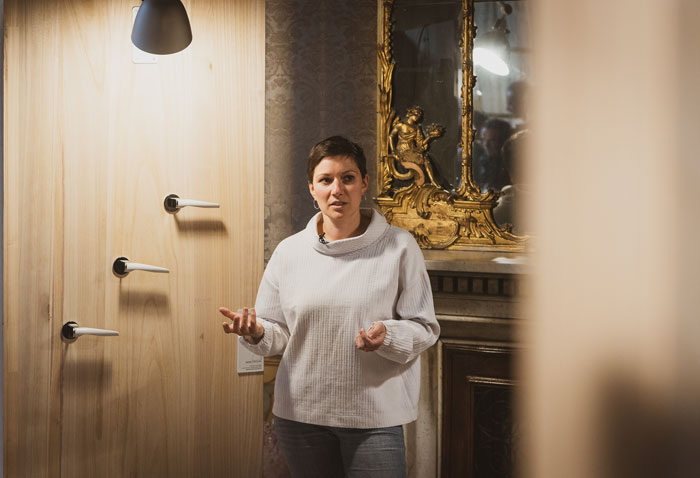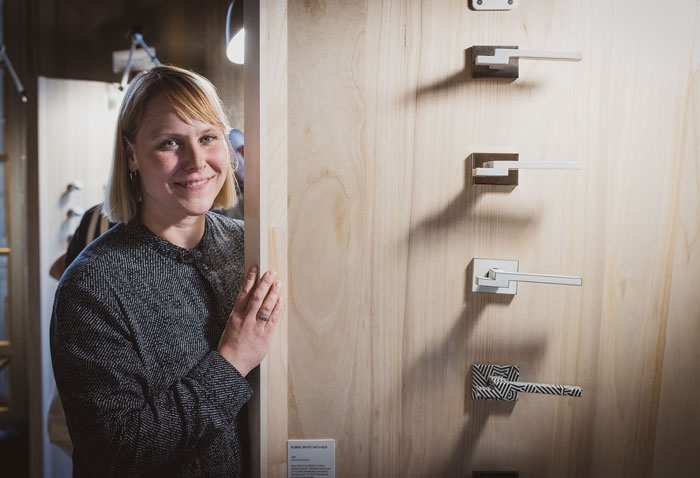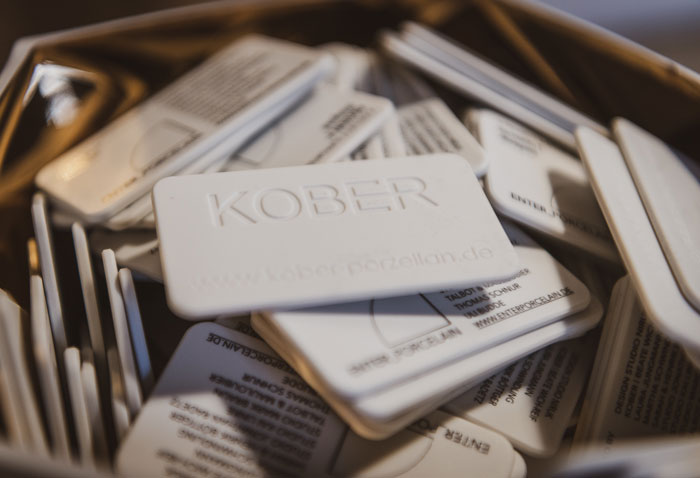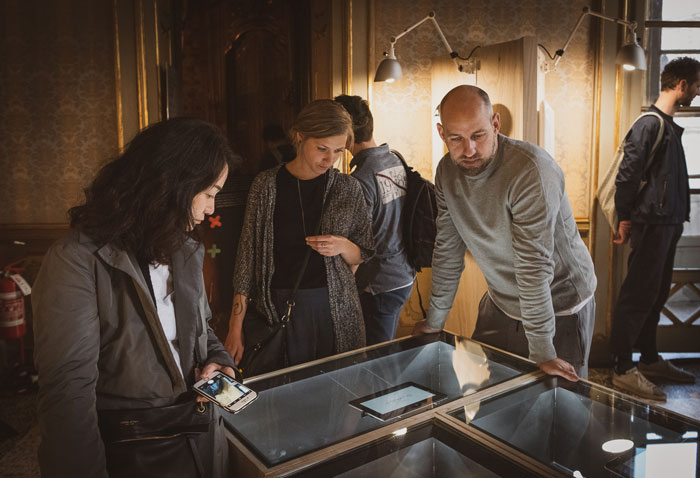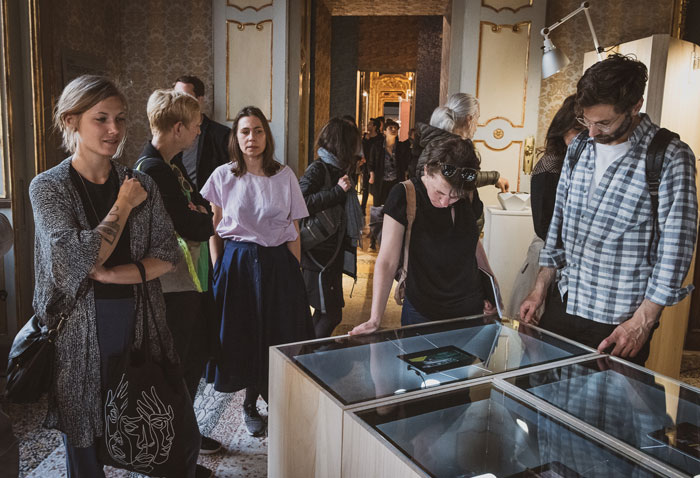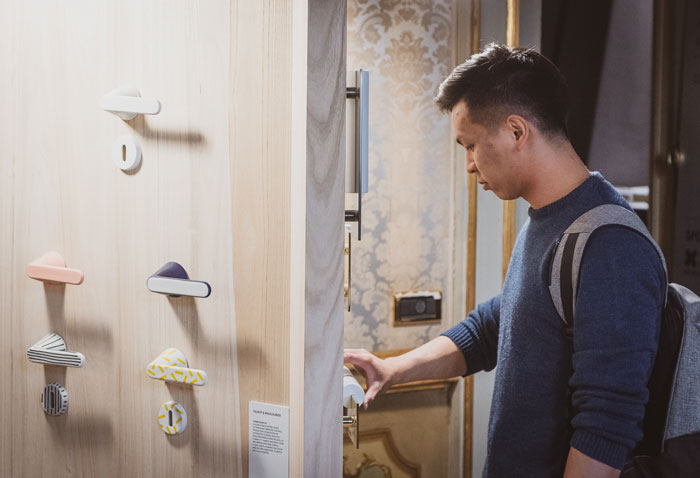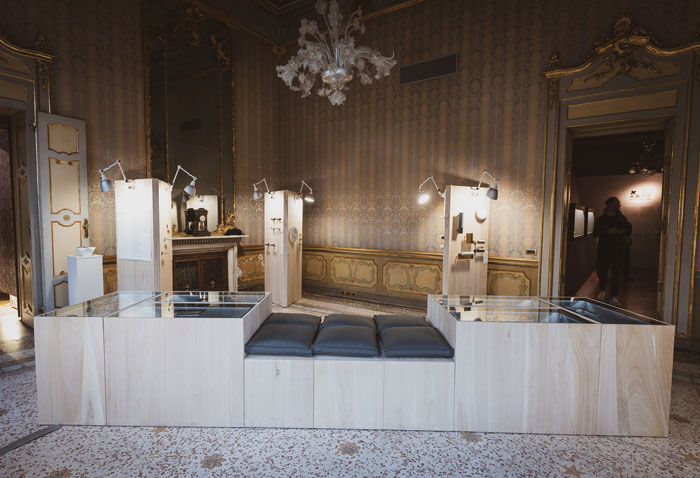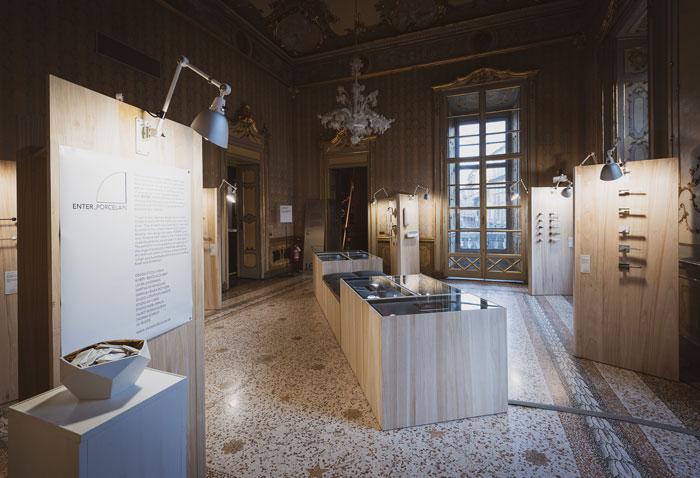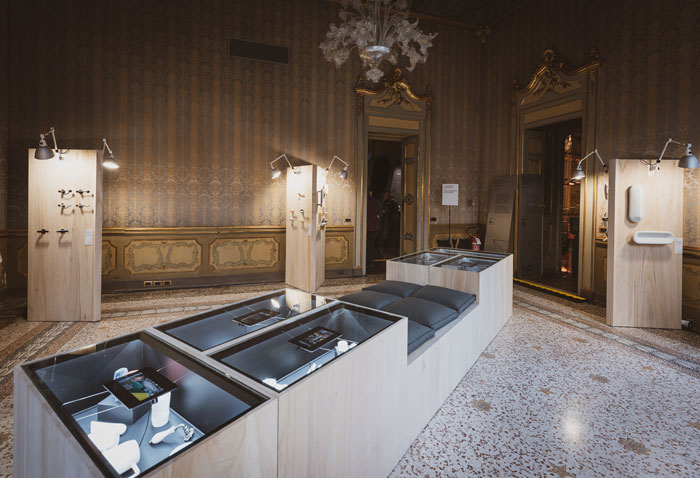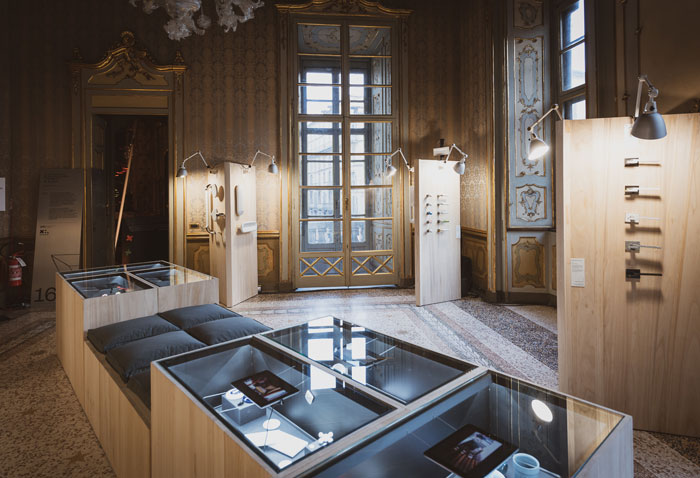23 Apr Enter Porcelain
PALAZZO LITTA, MILAN
9 – 14 april 2019
11 models of brass and porcelain door handles
Olivari was present at the FUORI SALONE this year too.
On the occasion of Design Week 2019, in the prestigious setting of Palazzo Litta Kober and Olivari presented “Enter Porcelain”, an exhibition showing the models of brass and porcelain door handles created by 11 German designers, involved in a creative workshop by the two companies. A unique and varied collection of handles, different in shapes and sizes, finishes and colors.
IDO, designed by Sarah and Henrik Böttger, is especially suitable for public areas, large and sliding doors due to its reduced shape. The surface highlights the quality of porcelain and forms a solid and durable object that offers various possibilities of handling. The pull handle emphasizes the modernity of the familiar material in a new context.
Mark Braun developed three handles for the exhibition: INSIDE OUT, VOLT and UNITS. The hollow doorhandle with a layer of gold inside, INSIDE OUT, highlights porcelain in its pure qualities and serves with gentle ergonomics. VOLT is a significant rippled doorhandle which is surprisingly comfortable, with a high usability. Made in white and black glazed porcelain. UNITS, a playful cylindrical doorhandle with almost endless variations by combining glazed units in four different lengths and seven colors.
PUSH AND PULL by Uli Budde are porcelain door mountings, semantically designed to be clear about the direction the door should be opened. Geometrical and bold, yet soft and organic – both handles are meant for both vertical and horizontal use.
The geometric element of the handle TRIM designed by Laura Jungmann is the cylinder, which can be found both in the blank and in the recessed grips. Rotationally symmetrical bodies are intersected in such a way that a dynamic and ergonomic contour is created. Thumb, index finger and ball of the hand intuitively find their place.
Studio Kai Linke developed with RITO a handle that serves as an interface between man and architecture. Out of round handle-neck made of metal forms an oval, hand-flattering handle made of ceramic and convinced with comfort and clearly curved contour. The deliberate change of material from metallic to ceramic surfaces underlines the flowing form and high quality workmanship.
Two drafts come from Design Studio Niruk: The door handles HOMAGE are inspired by Bauhaus architecture and the industrial production method of extruding porcelain in strands. Uncoated brass will get a patina and a vivid surface over time, while the black version focuses more on the graphic look. SENSO is a doorknob born from the fascination of new tactile structures in porcelain, resulting in a clear design with almost technical appeal.
EXTRUSION by Studio Jonathan Radetz does not only recite Walter Gropius’ famous classic, its color scheme and shape dismantles the masterpiece into its every function. CIRCLE unifies an entrance area’s definitive information and function all in one spot, thus calming the outer appearance with the notion of high-class architecture.
ALPHABET OF HANDLES is a metal rod designed by Thomas Schnur and crafted by OLIVARI which forms different gestures and leads over to a hand-flattering ceramic produced by KOBER. The meandering metal part of HANDS ON reflects the technical expertise from OLIVARI and creates a perfect transition to the precisely extruded ceramics from KOBER.
Martha Schwindling makes use of the signifiers of entrances and exits with SIGN: The long-lasting porcelain serves as decoration and transforms the handle and knob into a plate for any desired indication.
FORME BLANCHE by Talbot & Mauloubier is a door handle entirely made of porcelain, improved for mass production. Establishing an alternative to metal or nylon while providing a greater level of durability. Handle and rose cover are merged into one overall, iconic shape. A canvas for color and pattern variations, to match with any interiors.
Beate Wich-Reif developed an unique design concept driven by the values of modern minimalistic aesthetics and brought to life by the fine art of porcelain making. STEP escalated opportunities for interior design with various glazes and decals.
The designers who participated were: Beate Wich-Reif, Design Studio Niruk, Studio Jonathan Radetz, Studio Kai Linke, Laura Jungmann, Studio Mark Braun, Studio Martha Schwindling, Talbot & Mauloubier, Sarah & Henrik Böttger, Thomas Schnur, Uli Budde.
